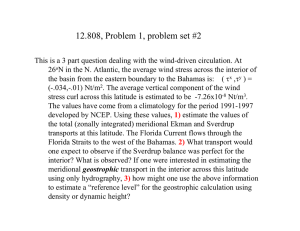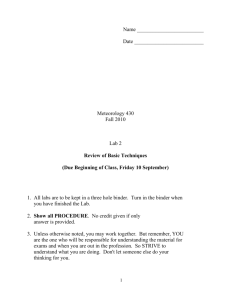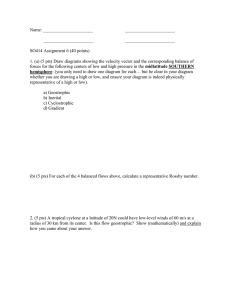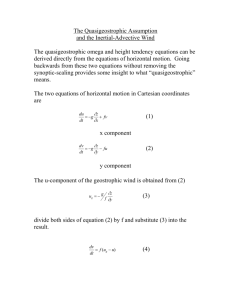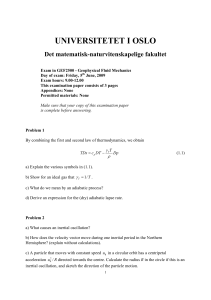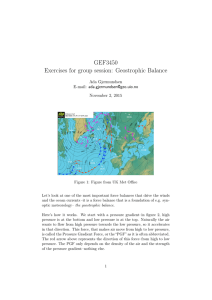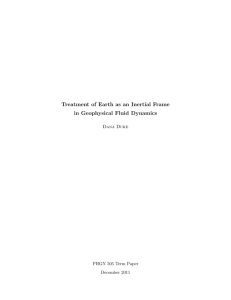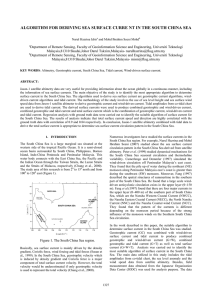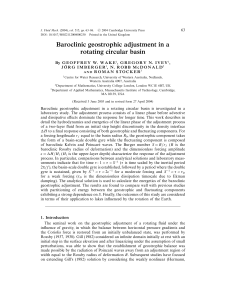GEF 2500 Problem set 7
advertisement
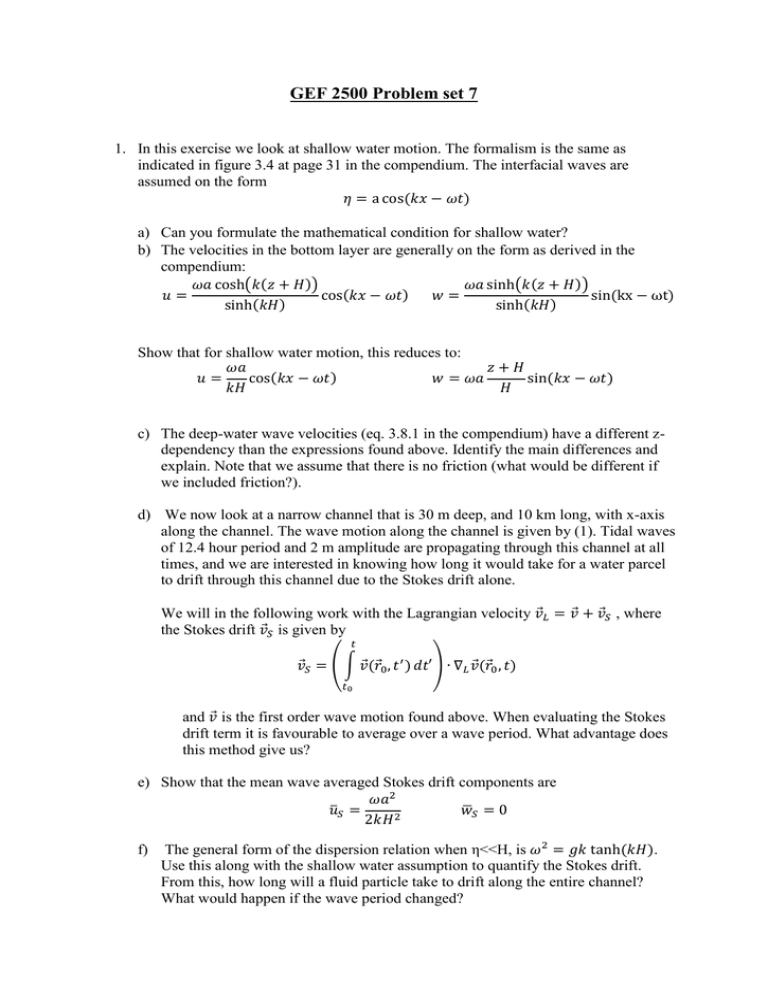
GEF 2500 Problem set 7 1. In this exercise we look at shallow water motion. The formalism is the same as indicated in figure 3.4 at page 31 in the compendium. The interfacial waves are assumed on the form a) Can you formulate the mathematical condition for shallow water? b) The velocities in the bottom layer are generally on the form as derived in the compendium: ( ) ( ) Show that for shallow water motion, this reduces to: c) The deep-water wave velocities (eq. 3.8.1 in the compendium) have a different zdependency than the expressions found above. Identify the main differences and explain. Note that we assume that there is no friction (what would be different if we included friction?). d) We now look at a narrow channel that is 30 m deep, and 10 km long, with x-axis along the channel. The wave motion along the channel is given by (1). Tidal waves of 12.4 hour period and 2 m amplitude are propagating through this channel at all times, and we are interested in knowing how long it would take for a water parcel to drift through this channel due to the Stokes drift alone. We will in the following work with the Lagrangian velocity ⃗ the Stokes drift ⃗ is given by ⃗ (∫ ⃗ ⃗ ) ⃗ ⃗ , where ⃗ ⃗ and ⃗ is the first order wave motion found above. When evaluating the Stokes drift term it is favourable to average over a wave period. What advantage does this method give us? e) Show that the mean wave averaged Stokes drift components are ̅ f) ̅ The general form of the dispersion relation when η<<H, is . Use this along with the shallow water assumption to quantify the Stokes drift. From this, how long will a fluid particle take to drift along the entire channel? What would happen if the wave period changed? 2. Figure out the velocities (including directions) from problem 1 of problem set 6, but now assume that the fluid is in geostrophic balance. How long would a fluid parcel have taken to accelerate to the geostrophic speed-assuming that the acceleration was governed by the equations with the Coriolis term set to zero (as was done in problem 1 in problem set 6)? How far would the fluid parcel have traveled? Note that for a fluid parcel initially at rest and subject to a forcing by a pressure gradient, the Coriolis term is initially zero, because the velocity is zero. Hint: a) For the ocean case the governing eguation is Use as in problem set 6 b) Calculate the geostrophic flow c) Ignore the Coriolis term when you calculate the time it would take the parcel to accelerate to the geostrophic speed. The time is found by integrating the expression in a) with f=0. 3. An aircraft flying a heading of 60o (i.e. 60 degrees east of north) at air speed 200 m/s, moves relative to the ground due east (90 degrees) at 225 m/s. If the plane is flying at constant pressure, what is its rate of change in altitude (in meters per kilometer horizontal distance) assuming a steady pressure field, geostrophic winds, and f = 10-4 s-1 ? Hint: a) First determine the geostrophic wind b) Use the equations for the geostrophic flow in isobaric coordinates to obtain the horizontal gradient of Phi c) Use egn. 1.6.2 from the compendium to get an expression for dz/dx 4. The mean temperature in the layer between the 750- and 500-hPa pressure levels decreases eastward by 3 K per 100 km. If the 750-hPa geostrophic wind is from southeast at 20 m/s, what is the geostrophic wind speed and direction at 500 hPa? Let f = 10-4 s-1 . Hint: a) This problem concerns thermal wind in pressure coordinates b) The horizontal temperature gradient is an AVERAGE between pressure levels
